Do you love the taste of tilapia but want to put a unique twist on it?
If so, you’ve come to the right place.
Tilapia is an incredibly versatile fish that can be cooked in a variety of ways and spiced up with different flavors.
In this article, I will share my top 10 spices for tilapia that are sure to take your dish from ordinary to extraordinary.
With these spices, you can create delicious and flavorful meals without having to spend hours slaving away in the kitchen.
So let’s get started!
Read Also: Tilapia Wine Pairing – The Best Wines for Tilapia
What is Tilapia?

Tilapia is a type of fish that belongs to the cichlid family.
It is native to Africa and the Middle East, but has been introduced around the world for aquaculture purposes.
Tilapia are omnivorous, meaning they eat both plant-based foods like algae and small aquatic animals such as insects and crustaceans.
They have an elongated body shape with large scales, two dorsal fins, and a single anal fin.
The color of tilapia can range from light gray to olive green or even brownish-red depending on their diet and environment.
Tilapia is one of the most popular farmed fish in the world due to its fast growth rate, hardiness, mild flavor profile, low-fat content (which makes it ideal for people who want leaner proteins), affordability, sustainability (it’s often raised in recirculating systems that use less water than traditional aquaculture methods) and versatility (it can be cooked in many different ways).
Tilapia can be found fresh or frozen at most grocery stores or seafood markets; it’s also widely available canned or smoked.
The 10 Best Spices for Tilapia
Tilapia is a mild-tasting fish that can be prepared in many different ways.
The key to making the best out of it is finding the right spices to bring out its flavor.
Here are ten spices you should consider when preparing tilapia dishes, each adding unique flavors and aromas:
1. Lemon Pepper
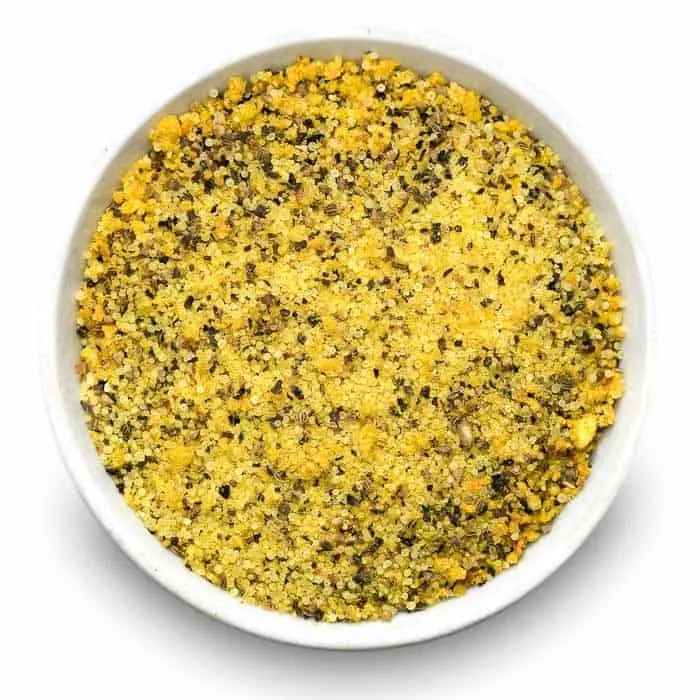
Lemon pepper is a seasoning blend made from ground black peppercorns, lemon zest, and other herbs and spices.
It has a bright citrus flavor with a hint of heat from the pepper.
The combination of flavors makes it an ideal seasoning for fish, poultry, vegetables, salads, and more.
- How Much To Use: When using lemon pepper to season tilapia or any other type of fish, you should use about 1/2 teaspoon per pound of fish. If you are making a larger batch or want more intense flavor, feel free to add more as desired.
- Varieties: There are many different varieties of lemon pepper available in stores today. You can find traditional blends that contain just black peppercorns and lemon zest or blends that include garlic powder, onion powder, oregano leaves, red chili flakes and other herbs and spices for added flavor complexity. Some brands also offer organic versions which are made without artificial ingredients or preservatives.
2. Garlic Powder
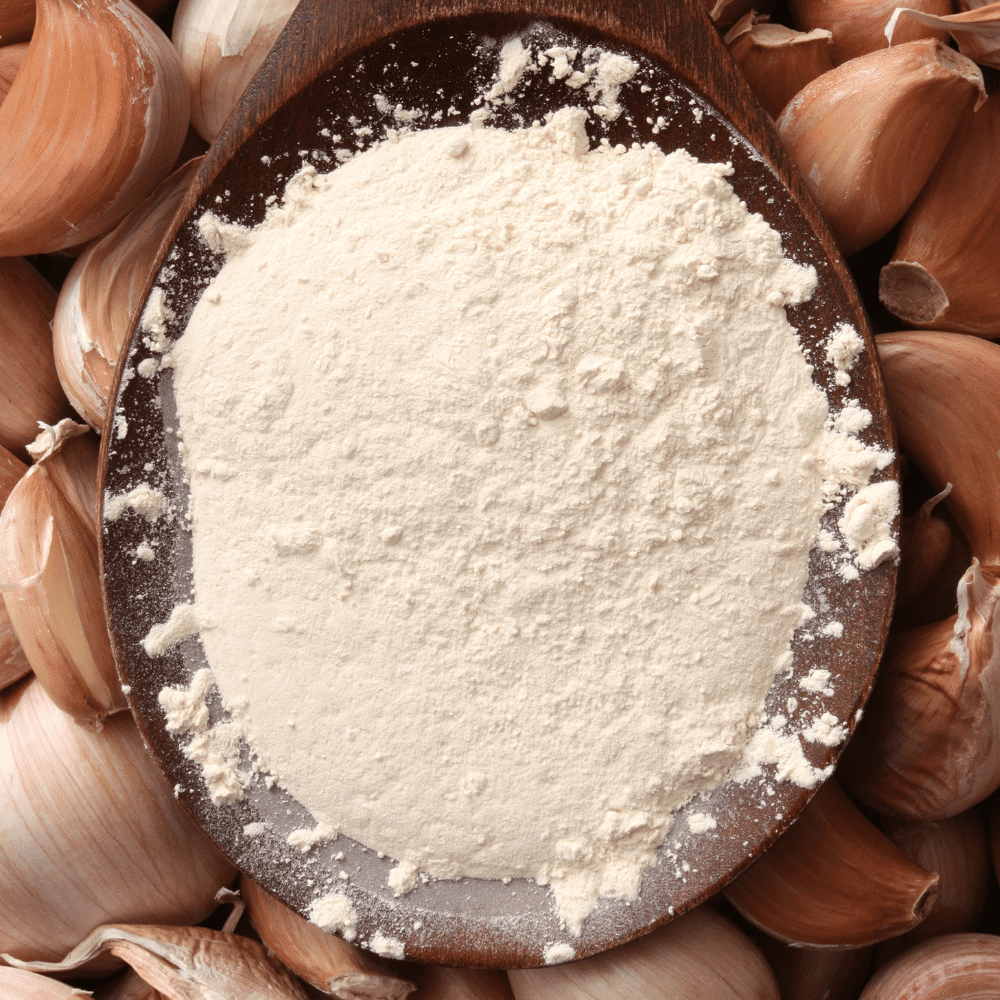
Garlic powder is a seasoning made from ground, dehydrated garlic.
It has a strong and pungent flavor that adds depth to many dishes.
It can be used as a substitute for fresh garlic in recipes or added to dishes for an extra kick of flavor.
- How Much To Use: The amount of garlic powder you should use depends on the dish and your personal preference. Generally speaking, 1/4 teaspoon of garlic powder is equal to one clove of fresh garlic, so start with that amount and adjust according to taste. Keep in mind that the flavor will become more intense as it cooks, so it’s best to add it at the beginning of cooking rather than at the end.
- Varieties: There are two main types of garlic powder available; regular and granulated. Regular garlic powder is finer in texture and has a stronger flavor than granulated garlic powder which is coarser in texture and milder in taste. Both varieties are suitable for most recipes but if you’re looking for something with more subtlety then opt for granulated garlic powder instead.
3. Paprika
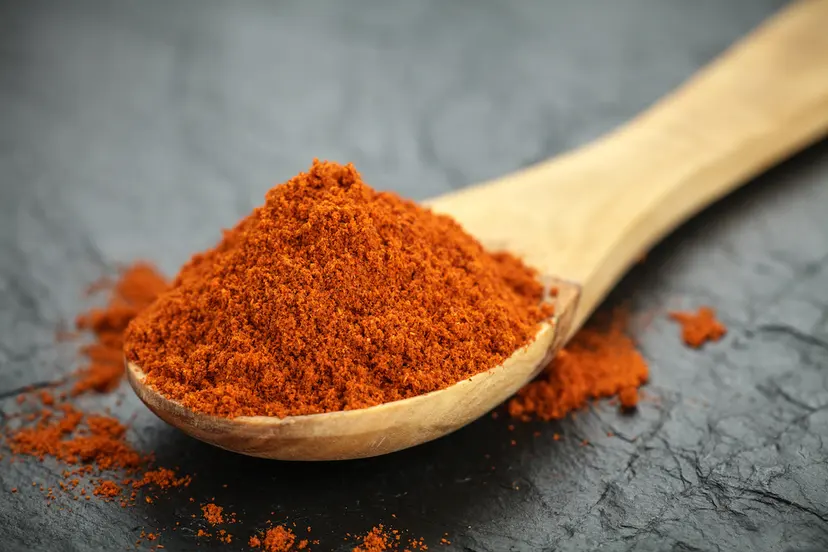
Paprika is a spice made from grinding dried red peppers.
It’s commonly used in Spanish, Hungarian, and other European cuisines to add flavor and color to dishes.
Paprika can range from mild to spicy depending on the type of pepper used and how it was processed.
- How Much To Use: When adding paprika to your dish, start with a small amount (1/4 teaspoon) and then adjust according to taste. The flavor of paprika can be quite strong so you don’t want to overdo it. You can always add more if needed but you can’t take away once it’s added!
- Varieties: There are several varieties of paprika available including sweet, smoked, hot, and Spanish-style. Sweet paprika is the most common variety found in grocery stores; it has a mild flavor that won’t overpower other ingredients in your dish. Smoked paprika adds an earthy smokiness while hot paprika will give your dish some heat. Spanish-style paprikas are usually labeled as “pimenton” or “pimentón de la Vera”; they have a slightly sweet yet smoky flavor that pairs well with fish dishes like tilapia.
4. Cumin

Cumin is a spice that comes from the dried seed of the cuminum cyminum plant, which is native to Egypt and India.
It has an earthy flavor with hints of citrus and is used in many cuisines around the world.
- How Much To Use: When cooking with cumin, it’s best to start with a small amount and add more as needed. A good rule of thumb is to use 1 teaspoon for every pound of tilapia you are cooking. You can always adjust the amount depending on your taste preferences.
- Varieties: There are two main varieties of cumin – black cumin (also known as nigella) and regular yellow/brown cumin. Black cumin has a slightly smokier flavor than regular yellow/brown cumin, so if you want a deeper flavor profile in your dish, opt for black cumin instead.
5. Cayenne Pepper
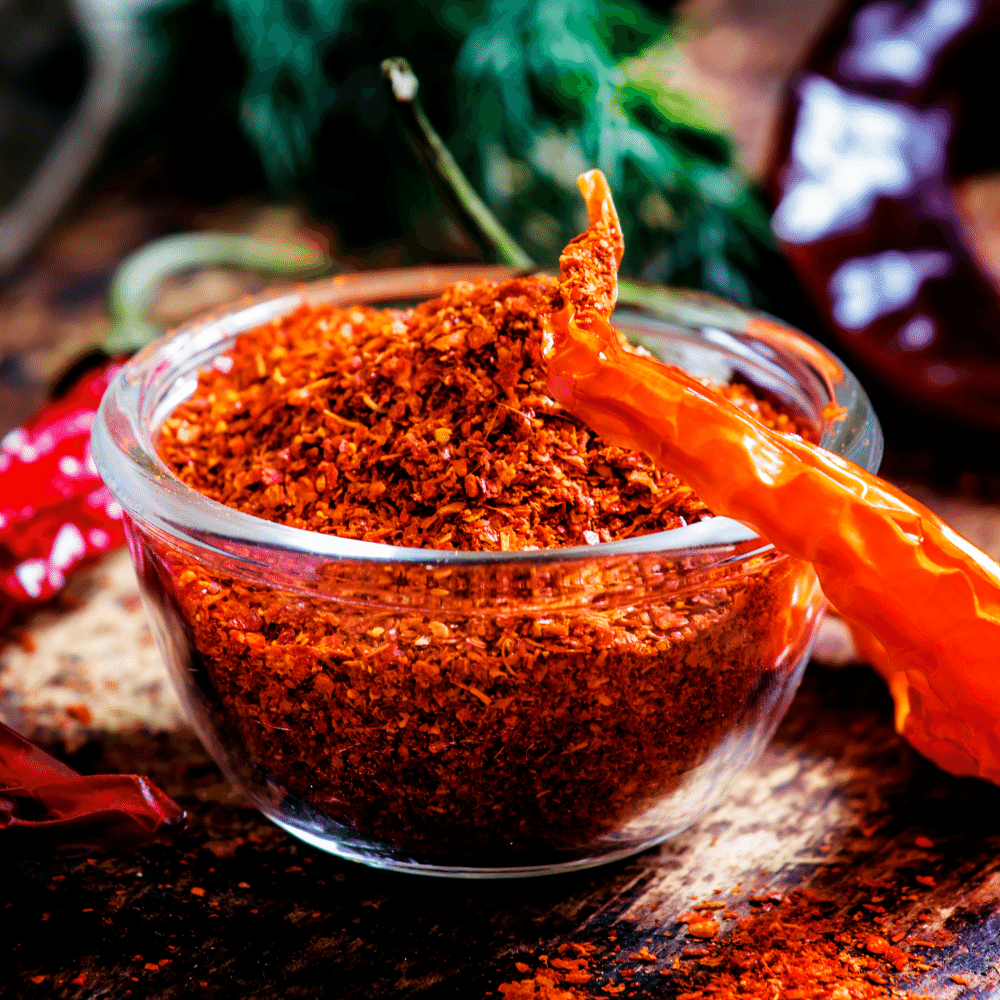
Cayenne pepper is a type of chili pepper that is commonly used to add heat and flavor to dishes.
It has a bright red color and can range in spiciness from mild to very hot, depending on the variety.
The most common varieties are cayenne long slim, cayenne large thick, and tabasco peppers.
- How Much To Use: When using cayenne pepper in your cooking, it’s important to use it sparingly as too much can make the dish overly spicy. A good rule of thumb is to start with 1/4 teaspoon for every 4 servings of food you’re making. You can always add more if needed but you can’t take away the heat once it’s added!
- Varieties: As mentioned above, there are three main types of cayenne peppers; cayenne long slim, cayenne large thick, and tabasco peppers. The long slim variety has a milder flavor while the large thick variety has a more intense flavor and higher level of heat. Tabasco peppers have an even higher level of heat than either one so be sure to use them sparingly!
6. Onion Powder
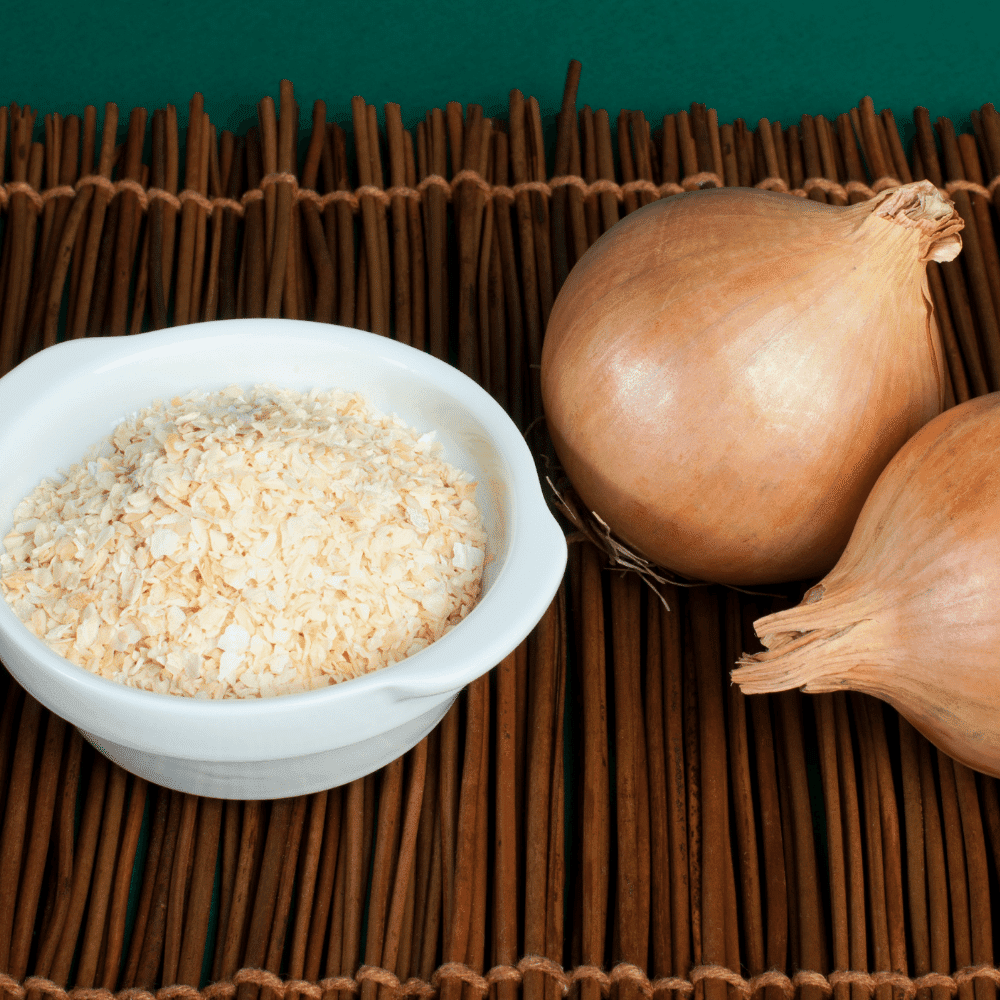
Onion powder is a seasoning made from ground, dehydrated onions.
It has a milder flavor than fresh onions and can be used to add onion flavor to dishes without the texture of chopped onions.
- How Much To Use: When using onion powder in place of fresh onions, use about one teaspoon of onion powder for every half cup of chopped onions called for in the recipe. You may need to adjust this ratio depending on how strong you want the onion flavor to be.
- Varieties: There are two main types of onion powder available; white and yellow. White onion powder is made from white or sweet onions and has a milder flavor than yellow onion powder which is made from yellow or pungent varieties like Vidalia or Walla Walla sweet onions. Both types will work well in recipes but if you’re looking for more intense flavor, go with the yellow variety.
7. Oregano
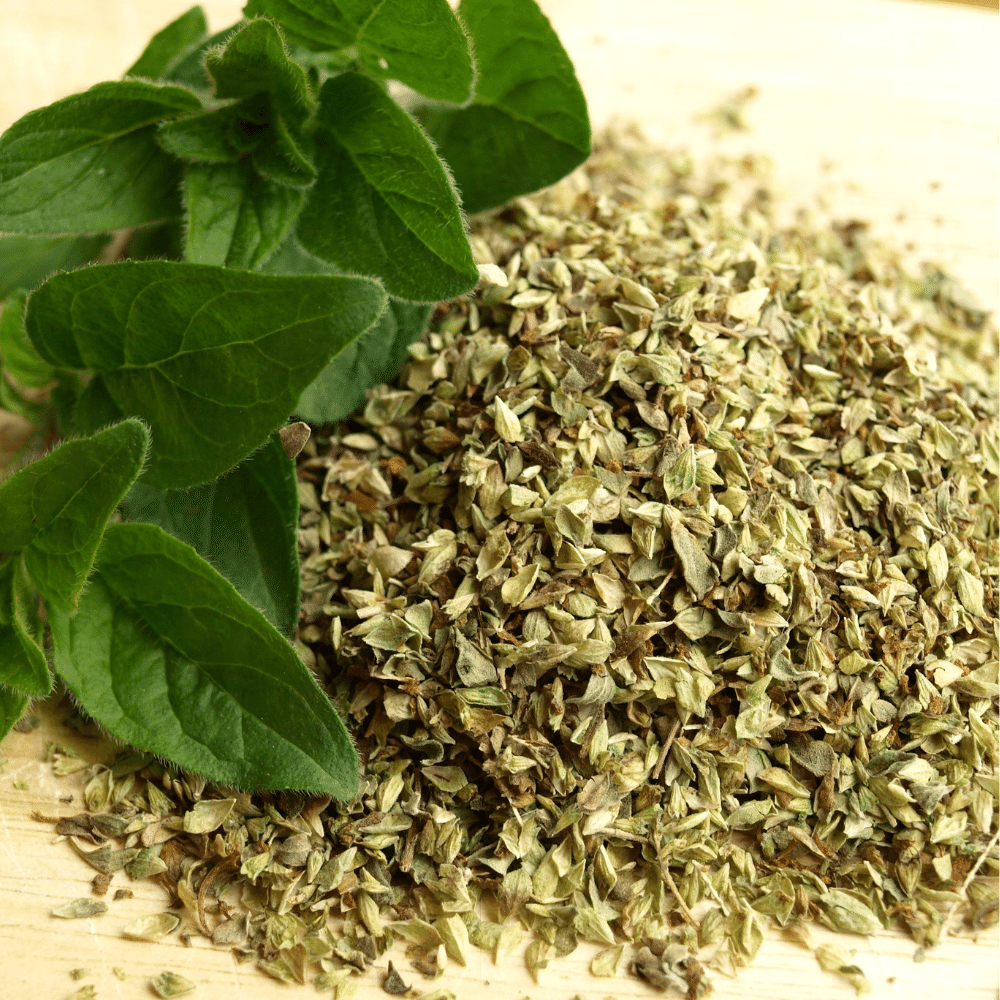
Oregano is an herb that belongs to the mint family and is native to the Mediterranean region.
It has a strong, slightly bitter flavor with notes of pepper and lemon.
The leaves are used fresh or dried in cooking, though it’s more common to find oregano in its dried form.
- When using oregano for tilapia, you should use about 1 teaspoon of dried oregano per pound of fish. If you’re using fresh oregano, double the amount as it will be less potent than its dried counterpart. You can also add other herbs like thyme or parsley if desired; just make sure not to overpower the dish with too much seasoning.
- Varieties: There are two main varieties of oregano—Greek and Italian—and they have different flavors and uses in cooking. Greek oregano has a stronger flavor than Italian oregano and is best used when cooked; it pairs well with tomato-based dishes like pizza or pasta sauce. Italian oregano has a milder flavor and can be used both cooked and raw; it works well in salads, dressings, marinades, sauces, soups, stews, etc.
8. Dill

Dill is an herb that belongs to the same family as parsley and celery.
It has a mild, slightly sweet flavor with hints of citrus and anise.
The leaves are feathery and light green in color, while the seeds are small and brownish-gray.
- How Much To Use: When cooking with dill, it’s best to start with a small amount since its flavor can be quite strong. For dishes like tilapia, you’ll want to use about 1 teaspoon of fresh dill or 1/2 teaspoon of dried dill per pound of fish. If you’re using dried dill, remember that it will have a more intense flavor than fresh so adjust accordingly.
- Varieties: There are two main varieties of dill; common or garden dill (Anethum graveolens) and Indian or karvira (Anethum sowa). Common or garden dill is what most people think of when they hear “dill” – it has long feathery leaves and a milder flavor than Indian or karvira which has shorter leaves and a stronger taste. Both varieties can be used interchangeably in recipes but if you’re looking for something more intense then go for the Indian variety.
9. Parsley
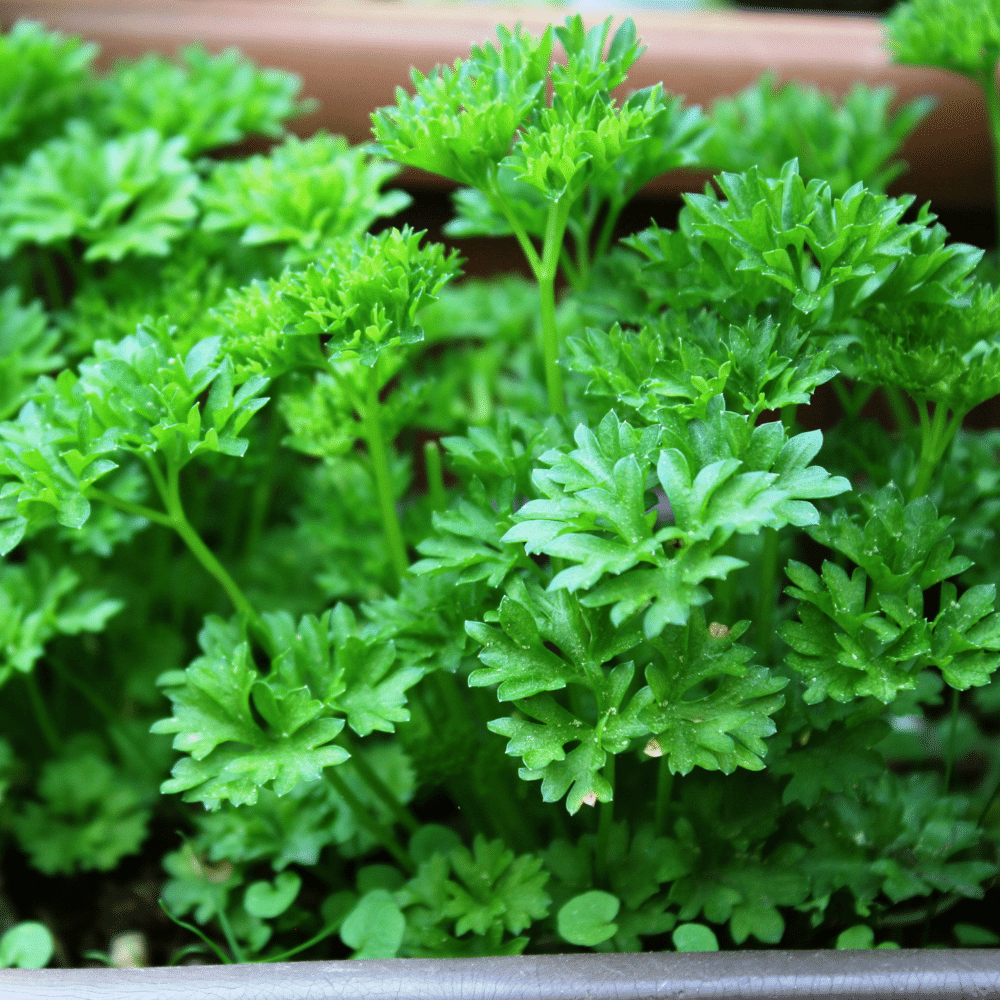
Parsley is a leafy green herb that is widely used in cooking.
It has a mild, slightly peppery flavor and can be found fresh or dried.
There are two main varieties of parsley—flat-leaf (Italian) and curly-leaf—and both have their own unique flavor profiles.
- How Much To Use: When using fresh parsley, it’s best to use the leaves only; the stems can be bitter. Generally, you should use about 1 tablespoon of chopped parsley per 4 ounces of fish. If you’re using dried parsley, start with half as much as you would for fresh since it has a more concentrated flavor.
- Varieties: Flat-leaf (Italian) parsley has a stronger flavor than curly-leaf and is often preferred for cooking because it blends better into dishes without leaving large chunks behind. Curly-leaf parsley is usually used as a garnish due to its attractive appearance but also adds some subtle flavor to dishes when used in small amounts.
10. Basil
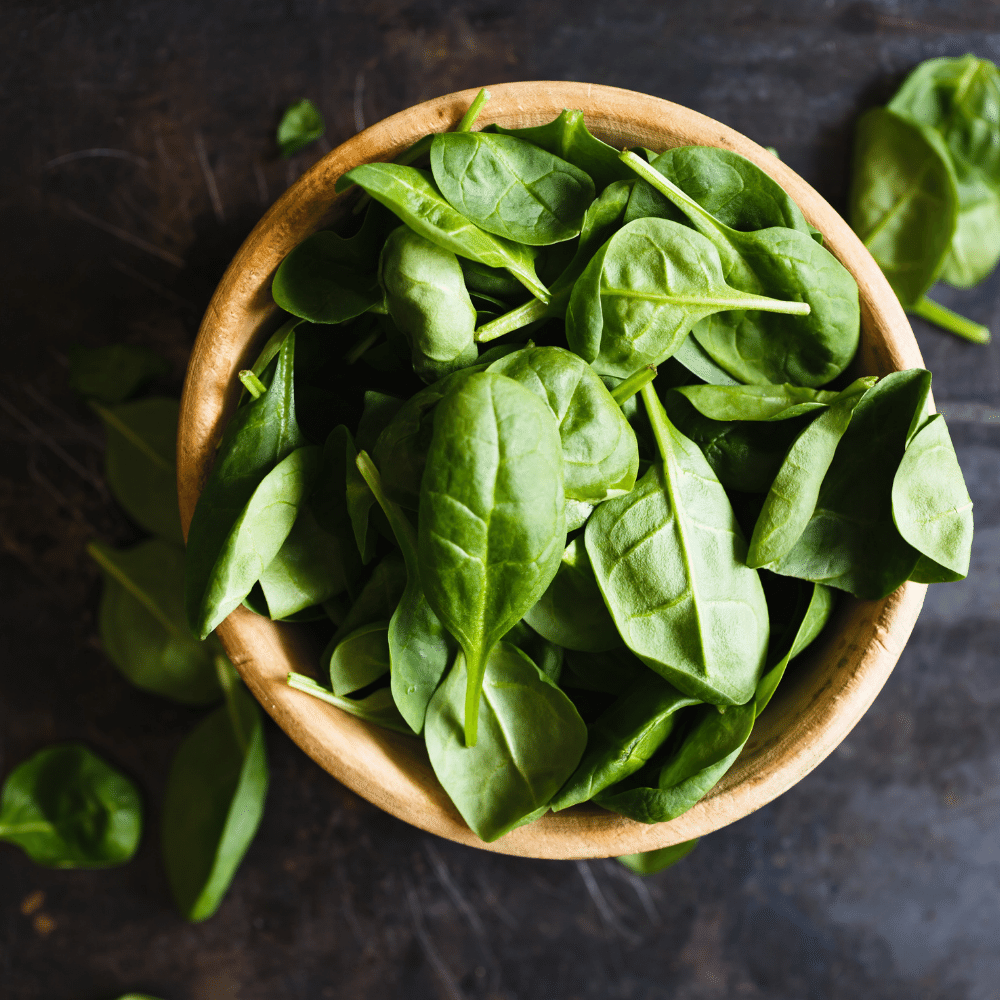
Basil is an herb that belongs to the mint family and is native to tropical regions of Asia.
It has a sweet, pungent aroma and flavor with notes of licorice, lemon, and cloves.
There are many varieties of basil available, including sweet basil (the most common variety), Thai basil, holy basil, purple basil, and lemon basil.
- When cooking with fresh basil leaves for dishes like pesto or salads, you should use about one tablespoon per serving. If you’re using dried basil in recipes like soups or sauces then you should use about one teaspoon per serving.
- Varieties: Sweet Basil is the most popular type of basil used in Italian cuisine; it has a slightly spicy flavor with hints of clove and aniseed. Thai Basil has a more intense flavor than sweet basil; its leaves are smaller and more pointed than those of sweet basils and have a hint of licorice-like taste. Holy Basil has a strong peppery flavor that can be overpowering if used too much; it’s often used in Indian cuisine as well as tea blends for medicinal purposes. Purple Basil has dark green leaves tinged with purple veins; its flavor is milder than other types but still quite fragrant. Lemon Basil has bright green leaves that have a citrusy aroma when crushed; its flavor is similar to lemongrass but not as intense.
Conclusion
In conclusion, there are many great spices that can be used to enhance the flavor of tilapia.
Some of the best spices for tilapia are lemon pepper, garlic powder, paprika, cumin, cayenne pepper, onion powder, oregano, dill, parsley, and basil.
These spices not only provide flavor, but they also bring out the natural flavor of the fish.
With the right combination of these spices, you can create a delicious and flavorful dish every time.
So, the next time you’re making tilapia, reach for one of these spices and let its flavor shine!

The 10 Best Spices for Tilapia
Ingredients
- Lemon Pepper
- Garlic Powder
- Paprika
- Cumin
- Cayenne Pepper
- Onion Powder
- Oregano
- Dill
- Parsley
- Basil
Instructions
- Pick your favorite spices from this list to flavor your tilapia.
- Prepare the rest of your meal, and enjoy!
Jenny has always been passionate about cooking, and she uses her platform to share her joy of food with others. Her recipes are easy to follow, and she loves giving tips and tricks to help others create their own unique culinary creations.

